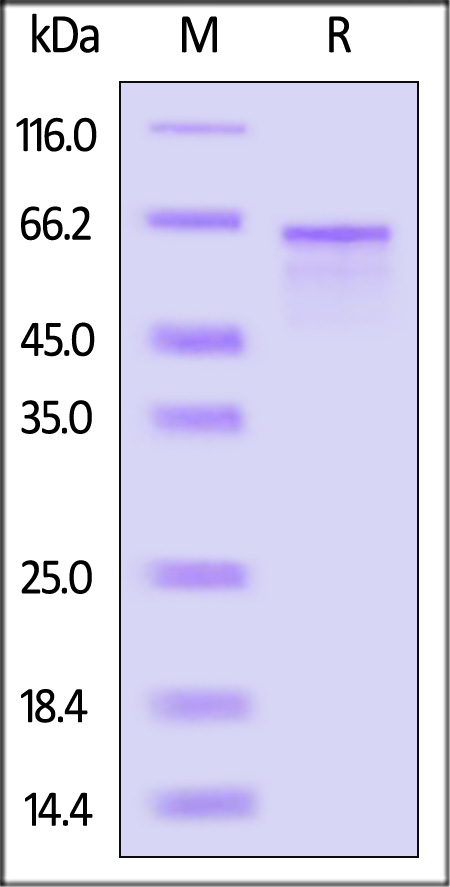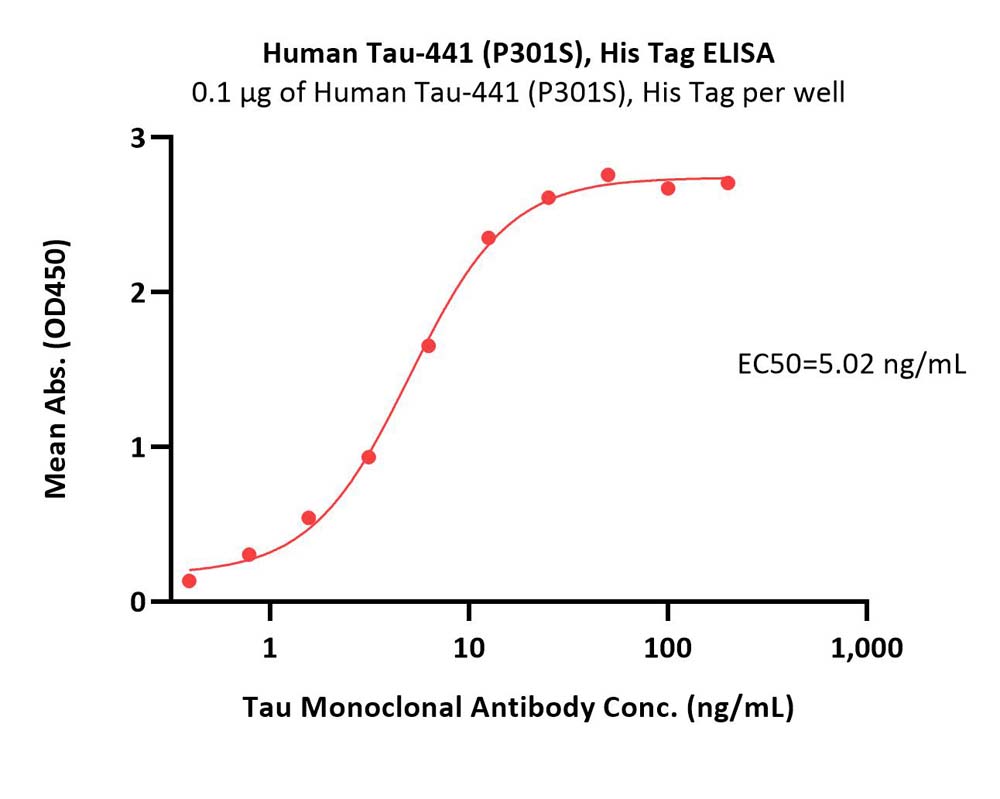分子别名(Synonym)
DDPAC,FTDP-17,MAPT,MSTD,MTBT1,Tau,PHF-tau,TAU
表达区间及表达系统(Source)
Human Tau-441 (P301S), His Tag (TAU-H5145) is expressed from E. coli cells. It contains AA Met 1 - Leu 441 (Accession # P10636-8 (P301S)).
Predicted N-terminus: Met
Request for sequence
蛋白结构(Molecular Characterization)

This protein carries a polyhistidine tag at the N-terminus
The protein has a calculated MW of 47.7 kDa. The protein migrates as 66 kDa under reducing (R) condition (SDS-PAGE).
内毒素(Endotoxin)
Less than 1.0 EU per μg by the LAL method.
纯度(Purity)
>90% as determined by SDS-PAGE.
制剂(Formulation)
Lyophilized from 0.22 μm filtered solution in PBS, pH7.4 with trehalose as protectant.
Contact us for customized product form or formulation.
重构方法(Reconstitution)
Please see Certificate of Analysis for specific instructions.
For best performance, we strongly recommend you to follow the reconstitution protocol provided in the CoA.
存储(Storage)
For long term storage, the product should be stored at lyophilized state at -20°C or lower.
Please avoid repeated freeze-thaw cycles.
This product is stable after storage at:
- -20°C to -70°C for 12 months in lyophilized state;
- -70°C for 3 months under sterile conditions after reconstitution.
电泳(SDS-PAGE)

Human Tau-441 (P301S), His Tag on SDS-PAGE under reducing (R) condition. The gel was stained with Coomassie Blue. The purity of the protein is greater than 90%.
SEC-MALS

The purity of Human Tau-441 (P301S), His Tag (Cat. No. TAU-H5145) is more than 85% and the molecular weight of this protein is around 53-65 kDa verified by SEC-MALS.
Report
活性(Bioactivity)-ELISA

Immobilized Human Tau-441 (P301S), His Tag (Cat. No. TAU-H5145) at 1 μg/mL (100 μL/well) can bind Tau Monoclonal Antibody with a linear range of 0.4-13 ng/mL (QC tested).
Protocol
背景(Background)
Tau is a microtubule-associated protein, which encodes by the MAPT gene that located on chromosome 17q21. Tau Promotes microtubule assembly and stability, and might be involved in the establishment and maintenance of neuronal polarity. Hyperphosphorylation of the tau protein (tau inclusions, pTau) can result in the self-assembly of tangles of paired helical filaments and straight filaments, which are involved in the pathogenesis of Alzheimers disease, frontotemporal dementia, and other tauopathies.























































 膜杰作
膜杰作 Star Staining
Star Staining











